1 Introduction
In a power system with a high proportion of renewable energy connected to the grid, the randomness and uncertainty of intermittent energy, such as wind and light energies, lead to variations in the power system configuration and structure, which will have a far-reaching impact on the planning of power systems [1], [2].In the process of power system planning, the ability of a power grid to cope with uncertainty can be improved through the uniform planning of power source and grid coordination.
Power source and grid coordination uniformity is an inherent attribute of transmission networks.It reflects the coordination of the distribution and utilization of power generation and transmission equipment in the present power grid structure when the load distribution is determined.Generally, there is an inherent tolerance that allows the power system to operate within a certain degree of deviation from a predetermined operating point without making any changes.The greater the deviation from the predetermined operating point, the lesser the inherent flexibility of the power system [3].
First, with the increase in the installation cost and difficulty of distributed renewable energy, particularly distributed photovoltaic (PV), it is difficult to predict how the PV power generation equipment will develop in the future when planning power systems.In the future, the overall power generation capacity and regional distribution may become operation safety risks for the active distribution network in which they are located [4]-[7].Therefore, it is necessary to improve the overall strength of the power grid and reserve the corresponding margin to cope with possible uncertainties.
Second, the uncertainty in the large number of distributed renewable energy, including in terms of volatility and randomness, where the randomness is unpredictable,cannot be predicted using any prediction method, making the weak links more prone to overrun or failure.To prevent this type of phenomenon, it is necessary to improve the robustness of the power grid to deal with source load fluctuations.The scheme obtained from the planning or operation scheduling model with the optimal system operation or construction economy as the objective function is often applied to the artificial or actual security constraint boundary of the system.If the power system uniformity can be sufficiently improved on this basis, the transmission equipment can be located farther away from the theoretical operation boundary, the weak links can be reduced, and the economic efficiency of the system can be improved while ensuring a high resistance to uncertainty disturbance.
This paper presents the concept of coordinated uniformity planning for power source and grid.Here,through a rational planning of the power source location and transmission line layout, the grid could be operated in a uniform state with a wide margin for all types of extreme critical states.By improving the self-regulation ability of the power grid to cope with various uncertainties in the power source and grid, we improved the reliability of the power grid operation and the economics of the power system planning.
The authors in [8]-[11]considered the non-uniformity of the grid network topology and the power-flow load factor as important factors leading to self-organized criticality of the grid.When a grid is in the self-organized criticality,any small perturbation can lead to a power outage accident or even a chain of failures [12].Therefore, it is necessary to consider the uniformity of the grid structure and state at the beginning of the transmission grid planning, in order to effectively prevent the grid from entering the self-organized criticality and reduce the vulnerability of the system [13],[14].The authors in [15]redefined the line efficiency, which is reflected in the ratio of the line active power to the power margin, and showed the advantages of the uniform power grid in terms of the grid vulnerability.
The authors in [16]used the standard deviation of the transmission line load factor to evaluate the operation non-uniformity of each area in the transmission grid, and to plan and design the grid line.The model considers multiple objectives of the economics and uniformity of the power grid line planning.The multiple objectives of different planning schemes are sorted separately,and the comprehensive ranking is used as the algorithm optimization index.This method makes it easy to normalize the dimensionless parameters using the weight coefficient method;however, the iterative process is significantly affected by the initial value.The authors in [17]limited the upper limit of the load rate of a transmission line in the power grid planning stage, in order to improve the operation safety margin of the system and the adaptability of the system to uncertain factors [18].This method effectively avoids the use of heavy-duty transmission equipment;however, it is difficult to accurately measure the benefits of hard constraints on the transmission line load rate in improving the reliability and safety of the system, and it may incur huge investment.The authors in [19]analyzed the relationship and difference between uniform scheduling and safe economic scheduling in an IEEE 30 bus test system.In [20], an optimal dispatching method involving line reconfiguration was proposed to improve the operation uniformity of a power grid, verified with an example.Generally, previous research on power system uniformity planning mainly focused on transmission line planning,without considering the important influence of power distribution changes on system uniformity;moreover,most studies were based on a qualitative analysis.In this study, we attempt to consider grid uniformity through a quantitative approach and simultaneously plan the location and capacity of the line and generator.
This paper proposes the concept of power source and grid-coordinated uniformity planning.The standard deviation of the transmission line load factor is established as the index for evaluating the uniformity of the power source and grid planning, and on this basis, with the minimum comprehensive cost of the full planning cycle as the objective, a multi-stage, multi-objective optimization model is formed for a coordinated uniformity planning of the power source and grid.The improved particle swarm optimization (PSO) algorithm and genetic algorithm (GA)are combined to solve the model, thus improving the solution efficiency and accuracy.Hereinafter, we call the algorithm PSO-GA.Finally, an example is provided to illustrate the feasibility and effectiveness of this method.
2 Mathematical description of the problem
2.1 Evaluation index of uniformity planning
A coordinated uniformity planning of the power source and grid requires optimizing the capacity and location of power generation equipment, as well as the distribution and number of transmission lines, based on load forecast data,considering the economy, uniformity, and safety constraints.Because uniformity emphasizes that the long-term overloading of transmission equipment should be avoided as much as possible for the system to better cope with uncertainty, the load factor of the transmission equipment should be mainly considered in the design of its uniformity index.
The standard deviation can reflect the degree of dispersion of a dataset, which is affected by extreme values.The lower the standard deviation, the more aggregated the data;the higher the standard deviation, the more discrete the data.By taking the standard deviation of the load factor of the transmission line as the uniformity evaluation index for the coordinated planning of the power source and grid, we can comprehensively consider the relative situation between the various lines.
In summary, we divide the overall planning period of the target transmission network into multiple planning investment stages depending on the requirements, and take the standard deviation of the load factor of all the transmission lines at the end of each stage as the index of the transmission grid uniformity:

where σi is the standard deviation of the load factor of all transmission lines in the i stage of the power grid;nLine,i is the total number of all transmission lines from the initial stage of the planning to the end of the stage i;μl,i is the ratio of the actual value of the active power transmitted by line l in stage i to the maximum allowable value, i.e., the load factor;μave,i is the average value of the load rate of all transmission lines from the initial stage of the planning to the end of stage i.
2.2 Uniformity planning model
We developed a multi-stage, multi-objective power source and grid coordination and uniformity planning optimization model, considering the operation simulation and investment coordination in the multiple development stages of different time lengths of the transmission network in the planning period, using the predicted load and possibility of multiple development stages of the power grid in the planning period.The known factors include the parameters of the power grid components used and the type of transmission line path plan.The objective is to minimize the total cost of the transmission network throughout the planning period, so that the construction costs between the phases are relevant.The cost takes into account the line investment cost and the power generation equipment investment and operating costs, and the uniformity index of the transmission line load factor;its objective function expression is:

where Nt is the set during the load period;NnGt is the set of newly generated power generation equipment in each time period;CnG,t is the unit power investment cost of the newly generated power generation equipment nG in period t;PnG,t is the installed capacity of the newly generated power generation equipment nG in period t;τt is the duration of the load period t;NGt is the set of power generation equipment constructed from the beginning of the planning period to the end of the period t;M is the discount rate;CG is the operating cost characteristic function of the power generation equipment G; is the active power output of the power generation equipment G during period t;NS is the transmission grid planning investment stage set;Nl is the set of planned transmission lines;
is the active power output of the power generation equipment G during period t;NS is the transmission grid planning investment stage set;Nl is the set of planned transmission lines; is the investment cost of line l in period i;
is the investment cost of line l in period i; is the number of line extensions of the line corridor l in period i, which is a non-negative integer variable;σi is the standard deviation of the load rate of all the transmission lines from the beginning of the planning period to the end of the investment period i;α is the adjustment coefficient corresponding to the construction cost of the transmission lines,a≤1.The lower the value of a, the lower the penalty on the nonuniformity of the transmission network.When a=1, and σi is ignored, the objective of the model is to minimize the expansion cost.
is the number of line extensions of the line corridor l in period i, which is a non-negative integer variable;σi is the standard deviation of the load rate of all the transmission lines from the beginning of the planning period to the end of the investment period i;α is the adjustment coefficient corresponding to the construction cost of the transmission lines,a≤1.The lower the value of a, the lower the penalty on the nonuniformity of the transmission network.When a=1, and σi is ignored, the objective of the model is to minimize the expansion cost.
In the objective function,σi is considered the penalty factor of the transmission line construction cost so as to improve the uniformity of the transmission network on the basis of controlling the comprehensive cost.The penalty function is nonlinear.In other words, with the increase in the standard deviation of the line load rate, the penalty increases exponentially.
The basic constraints of the power source and grid coordination planning include the transmission line capacity constraints, nodal power balance constraints, set output constraints, maximum number of expandable line constraints, and N-1 safety inspection constraints.
The set output constraints are as follows:
where and
and  are the upper and lower limits of the active power output of the power generation equipment G,respectively.
are the upper and lower limits of the active power output of the power generation equipment G,respectively.
The nodal power balance constraints are as follows:

where  is the active power transmitted by the transmission line l during the load period t;NF,j,t and NE,j,t refer to the set of transmission lines with node j as the head and terminal nodes in period t;NGt,j and NLoad,j refer to the generation equipment set and load set on node j;
is the active power transmitted by the transmission line l during the load period t;NF,j,t and NE,j,t refer to the set of transmission lines with node j as the head and terminal nodes in period t;NGt,j and NLoad,j refer to the generation equipment set and load set on node j; refers to the active load (predicted) size in the time period t;NB refers to the node set of the transmission network.
refers to the active load (predicted) size in the time period t;NB refers to the node set of the transmission network.
The transmission line capacity constraints are as follows:

where NL is the set of transmission line corridors;BL is the susceptance of the transmission line corridor L single-circuit transmission line; is the voltage phase angle of node j in load period t;j and d are the first and last nodes of the transmission corridor L, respectively.
is the voltage phase angle of node j in load period t;j and d are the first and last nodes of the transmission corridor L, respectively. is the active power transmitted by the transmission corridor L during the load period t.
is the active power transmitted by the transmission corridor L during the load period t. is the number of original transmission lines in the transmission line corridor L;
is the number of original transmission lines in the transmission line corridor L; is the number of newly added transmission lines in stage i.
is the number of newly added transmission lines in stage i.
The set output constraints under an N-1 anticipated accident are generated as follows:
where NK is the set of expected accidents;the superscript k indicates the expected accident operating state k, and  represents the active power output of the power generation equipment G under the expected accident k in period t;
represents the active power output of the power generation equipment G under the expected accident k in period t;
The transmission line capacity constraints under the N-1 anticipated accident are generated as follows:

where  is the active power transmitted by the transmission corridor L under the expected load period t under accident k,
is the active power transmitted by the transmission corridor L under the expected load period t under accident k, is the voltage phase angle of the node i at the expected load period t under accident k;
is the voltage phase angle of the node i at the expected load period t under accident k; is a parameter to check whether there is a transmission line outage in the line corridor L under the expected accident k,which is a binary integer parameter,
is a parameter to check whether there is a transmission line outage in the line corridor L under the expected accident k,which is a binary integer parameter, =1 indicates that the line is out of service, and
=1 indicates that the line is out of service, and  =0 means the line is running normally.
=0 means the line is running normally.
The nodal power balance constraints under the N-1 anticipated accident are as follows:

The maximum number of expandable lines constraints is as follows:
where  is the maximum number of lines that can be expanded in the transmission line corridor L.
is the maximum number of lines that can be expanded in the transmission line corridor L.
The analysis of the above transmission network planning model shows that it is a nonlinear mixed-integer multiobjective, multi-stage planning problem with multiple decision variables, which is difficult to solve using a single method.The model is further solved using the improved PSO-GA, described in Section 3, to form a power source and grid-coordinated uniformity-planning optimization scheme.
3 Solving method
The basic idea of the standard PSO is to randomly initialize a group of particles without mass and volume,where each particle is considered a solution to the problem that needs to be solved.The fitness function is used to measure the advantages and disadvantages of the particles.All the particles move at a certain speed in the feasible solution space and continuously follow the current optimal particles.After several generations of searching, the optimal solution of the problem is found [21]-[24].
The PSO algorithm seeks random solutions with multiple particles.Starting from random solutions, it iteratively finds the optimal solution and evaluates the quality of the solution through fitness.The PSO has attracted the attention of academia owing to its ease of implementation, high accuracy, and fast convergence, and has demonstrated its superiority in solving practical problems.The PSO is faster,but lacks dynamic adjustment of the speed, particularly when a variable takes a discrete value;with an increase in the number of iterations, the speed gradually decreases, and it easily falls into the local optimal solution [25], [26].
The idea of the GA originates from the law of “survival of the fittest” in biological evolution, i.e., “the group most suitable for the natural environment often produces a larger offspring group” [27], [28].It is a computational model that simulates the biological selection process of Darwin's biological evolution theory and genetic mechanism.It involves searching for the optimal solution by simulating the natural evolution process.Its main feature is to directly operate on structural objects, and there is no derivation or function continuity limit, making it more conducive to solving discrete variable problems [29].The GA has potential parallelism and strong robustness, but cannot utilize the feedback information of the network to adjust the position change speed in time.It can only be based on the set parameters and random mutation.Choice has a certain dependence.Moreover, the quality of the initial solution significantly influences its speed and solution quality.The higher the quality of the initial solution, the higher the starting point of the algorithm, thus improving the efficiency and quality of the solution [30].
This study combines the advantages of the PSO algorithm and GA, and develops an improved method called PSO-GA.
In this study, we first utilize the high search speed of the PSO algorithm to quickly eliminate unreasonable schemes.When the global optimal solution is not updated after 15 consecutive iterations, it is considered that the PSO algorithm has found the possible solution.The historical optimal solution of each particle is selected and transferred to the GA as the initial chromosome group of the GA.The GA considers each particle as a chromosome and each dimension of a particle as a gene of the chromosome.At this time, the initial chromosome group obtained by the GA will be screened by the PSO algorithm and has high quality.The GA mutates and selects each chromosome, so that it can find a better solution with a small amount of change(i.e., mutation) around each chromosome in this group, thus reducing the possibility and influence of the local optimal solution.Finally, the optimal solution is found.
This method improves the overall running speed and accuracy of the solution and reduces the possibility of falling into a local optimum.Fig.1 shows a flowchart of the solution method proposed in this paper.
4 Examples and analysis
The data used in the example test are as follows.The expansion plan allows the construction of power plants at six nodes, and up to six lines can be built in each transmission corridor, and the network voltage level is 110 kV.The price of a newly built 110 kV single-circuit transmission line with a transmission capacity of 100 MW is 800,000 CNY/km.The basic cost of a new power plant without a power generation node is 415.8 million CNY.The generators are available in 200 MW and 300 MW specifications.The price of an expanded 200 MW generator is 3.281 million CNY/MW, and the expansion cost of a 300 MW generator is 2.143 million CNY/MW.The data can be found in [31], [32].The utilization time of the power generation equipment is taken as 2920 h, and the maintenance cost of the generators is taken as 5% of the investment required for power generation equipment.The discount rate between each stage is 10%.A total of six transmission lines was built;there is provision for up to 84 transmission lines.We compare the cost price with the initial state.The stage one and stage two described in this article do not have the concept of actual time and are only considered as two planning stages.
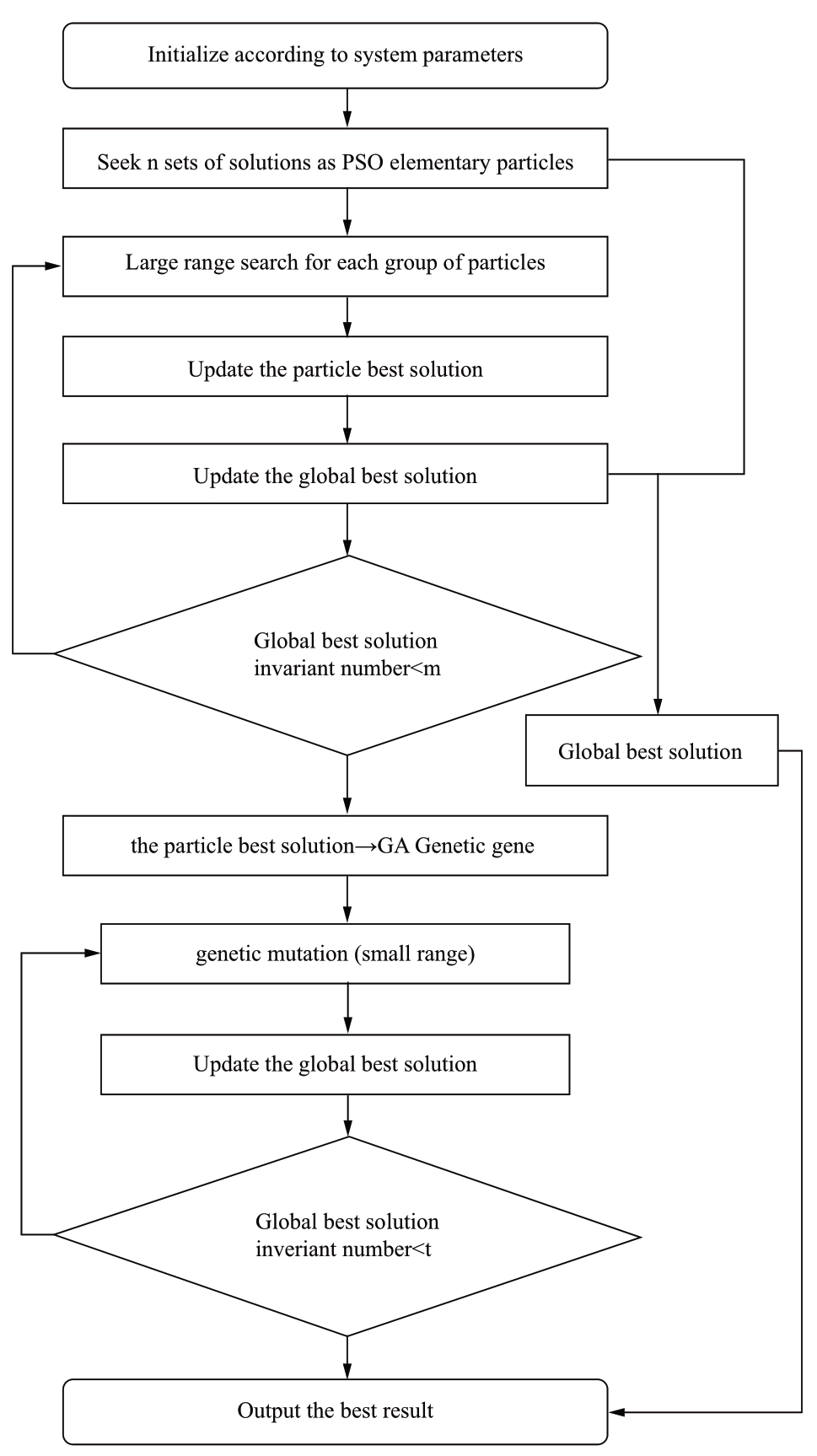
Fig.1 Flowchart of the solution method of power source and grid coordination plan model
The initial state of the transmission line is shown in Fig.2.The data required for the expansion and construction of the transmission network are given in Appendix A.The initial state (before expansion) of the power supply and the predicted load at each stage are listed in Table A1.The parameters of the transmission corridor and the lines to be built are listed in Table A2.

Fig.2 Initial-state network diagram of Garver’s six-node system
4.1 Power source and grid coordination planning
The improved PSO-GA is used to solve the model,aiming only at the lowest line expansion costs and generator construction and operation costs (Scheme 1),and subsequently, this algorithm is used to solve the model considering the uniformity evaluation index (Scheme 2).Both the constraints are consistent.
Table 1 and Table 2 list the solution results.
Table 1 Scheme 1 for the power source and grid expansion planning of a six-node system
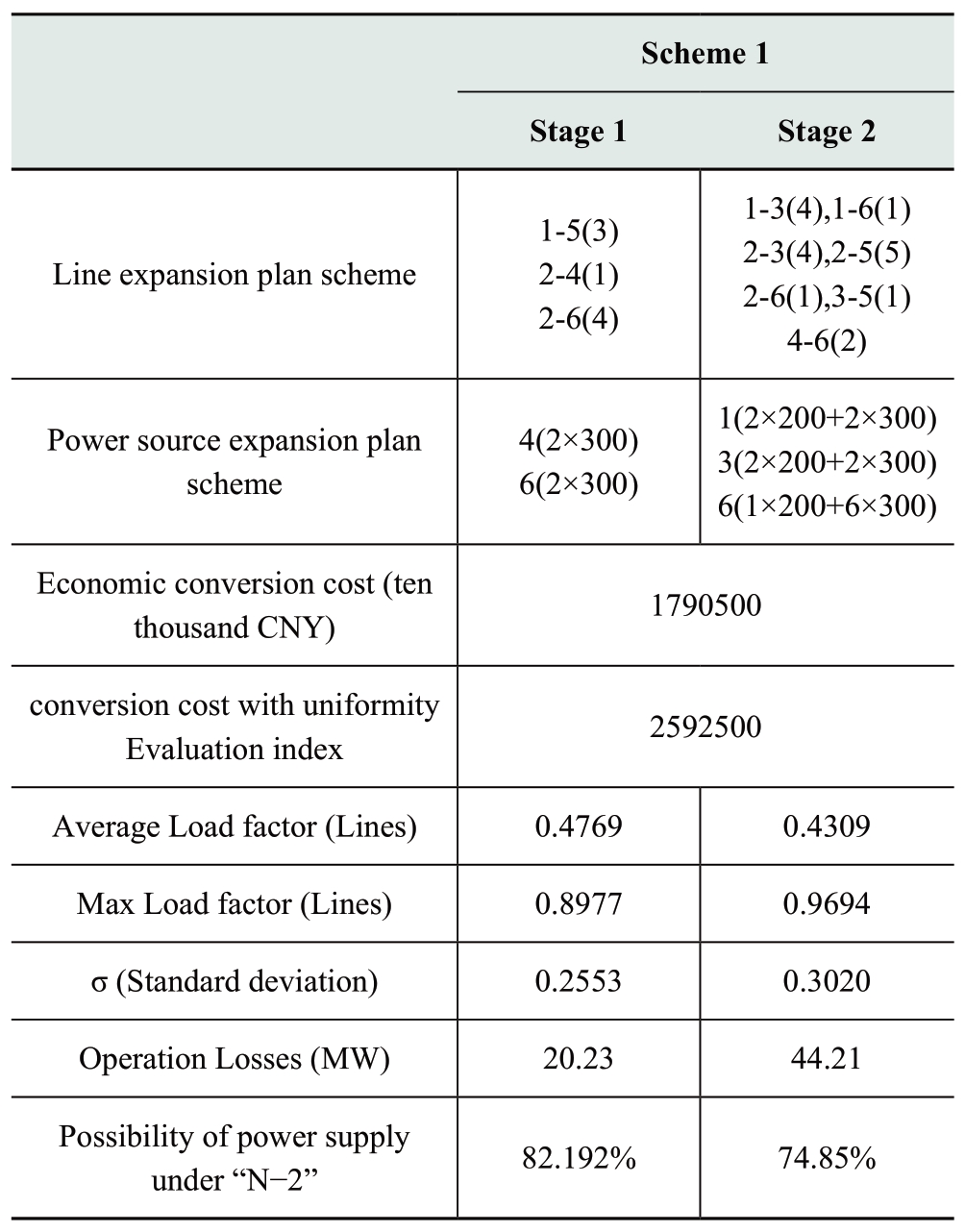
Table 2 Scheme 2 for the power source and grid expansion planning of a six-node system
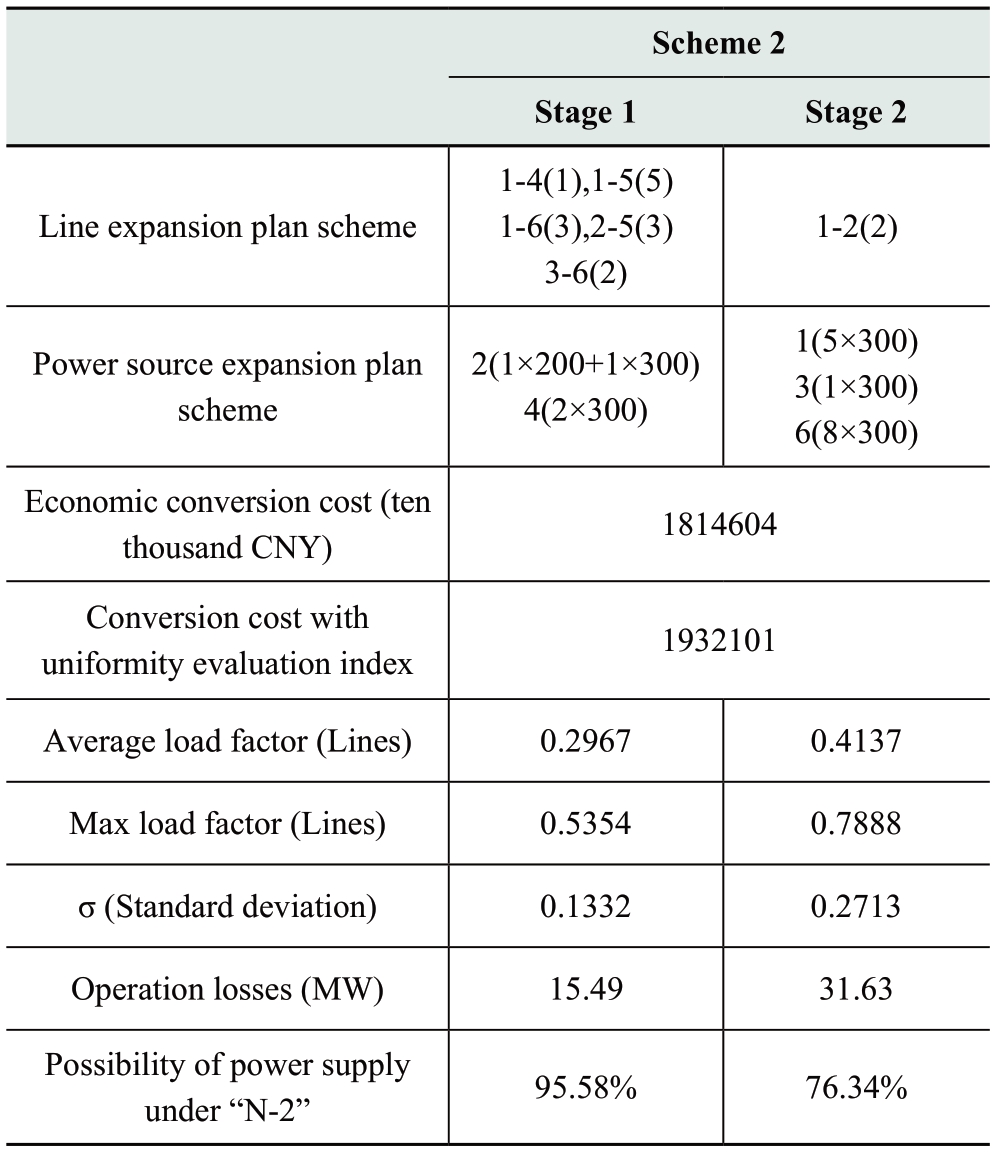
In this case, the “N-1” passing rate of the power grid in the original state is only 50%, whereas in the “N-2” case,the possibility of dispatching power without load losses is only 13.3%.
From Table 1 and Table 2, we find that the economic conversion cost of Plan 1 is lower than that of Plan 2 by 24104 million CNY, accounting for approximately 1.3% of the total investment.The standard deviation of the line load rate of Scheme 2 has been significantly improved compared with Scheme 1, and the uniformity is better.On this basis,the ability of the power source and grid to cope with the extreme N-2 situation has also been significantly improved.Through the constraint of uniformity, the maximum load factor of the line is decreased significantly, reducing the requirement of heavy-load equipment.
4.2 Comparison of line operation loss
The two schemes planned in this study are aimed at a fixed predicted load.In practical applications, the load may increase and/or drop rapidly in a short time period due to unpredictable reasons.Under the load scenarios of different proportions (denoted by the coefficient K), the running losses of the above two schemes are calculated under the corresponding circumstances.
Table 3 Comparison of line loss between the two schemes under different load levels
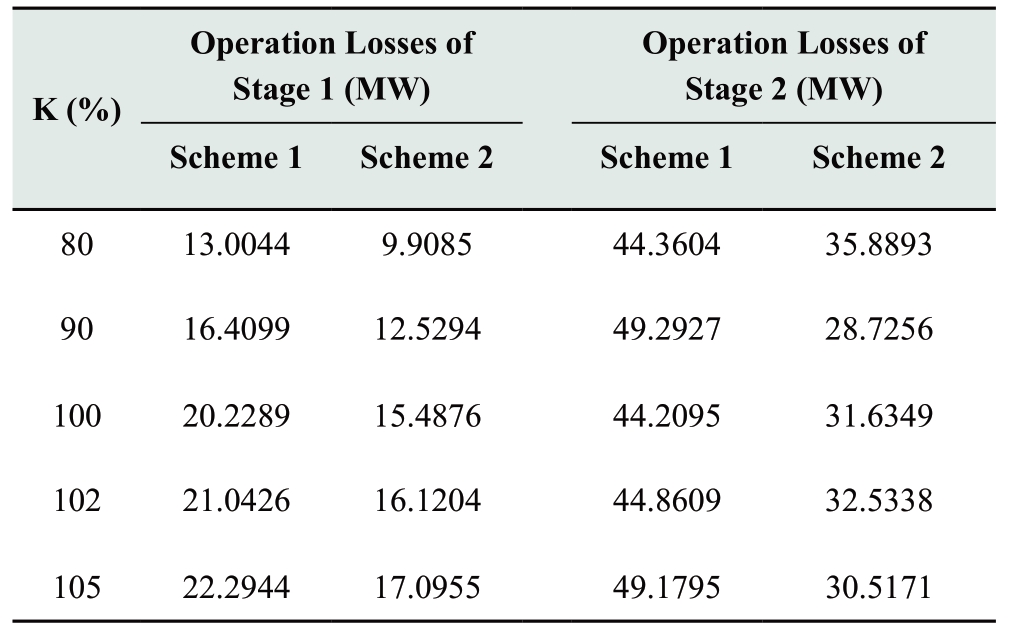
From Table 3, we find that regardless of the K value,the operating loss of Scheme 2 is always less than that of Scheme 1.Although the coordination plan of the power source and grid considering the uniformity index is slightly higher at one point in time, it yields a better economy for the long-term operation of the power grid.
4.3 Impact of renewable energy
In recent years, China's energy production and consumption have been the highest in the world.Given the current scenario of energy shortage and energy conservation and emission reduction, building a clean,reliable, interactive, and efficient smart grid has become an important means to promote the economic development while ensuring a low-carbon economy [33].
Due to the intermittency and volatility of distributed renewable energy generation, even if the active power output is predicted accurately, there remains different degrees of impact on the power flow and voltage of the power grid.Without considering wind and light curtailment,distributed renewable energy of the same size is added to the same node in the two schemes, respectively, and then their performances for a reliable operation under the n-2 condition are compared.
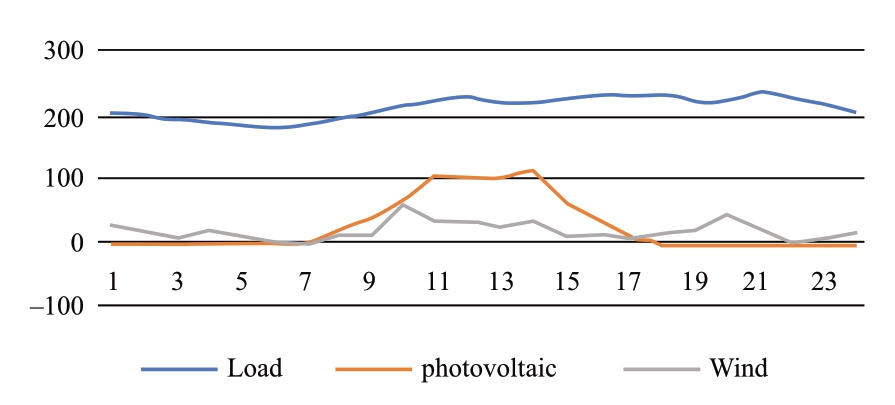
Fig.3 Typical daily curves of loads, PV power, and wind power (stage 1)
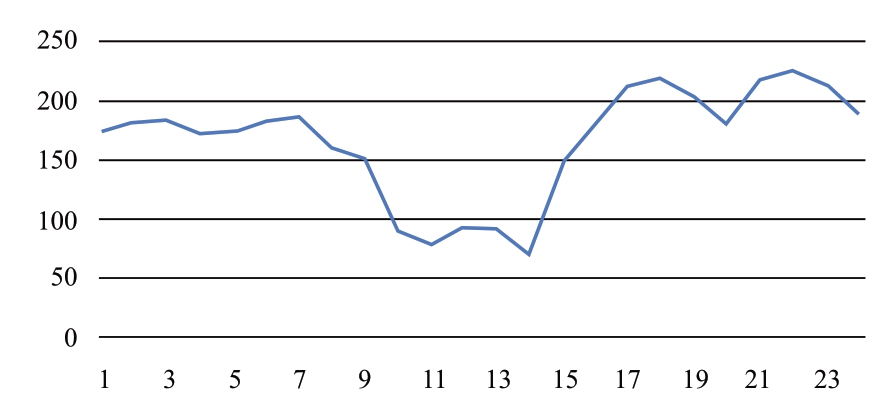
Fig.4 Net load curve (stage 1)
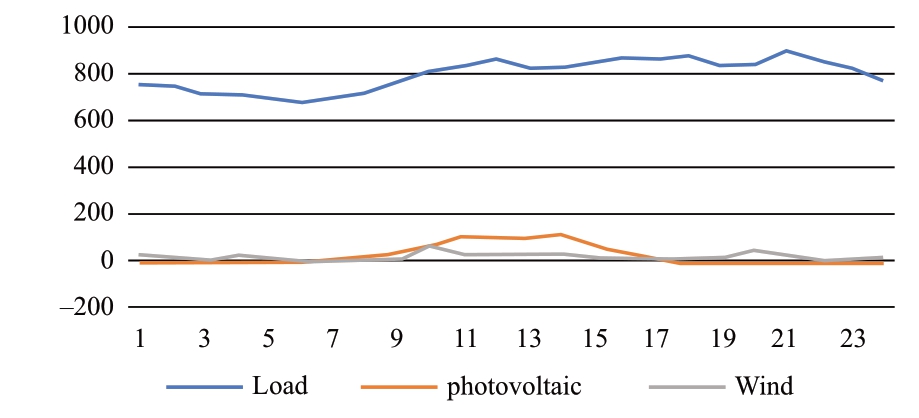
Fig.5 Typical daily curves of loads, PV power, and wind power (stage 2)

Fig.6 Net load curve (stage 2)
The node 3 of the two schemes is connected to renewable energy of the same capacity.The three curves shown in Fig.3 and Fig.5 are the typical daily load curve,typical daily PV power generation curve, and typical daily wind power generation curve.Fig.4 and Fig.6 show the net load curve after node 3 is connected to renewable energy.Fig.3 and Fig.4 show the first-stage data, whereas Fig.5 and Fig.6 show the second stage data.The data unit is MW.
Table 4 Possibility of power supply under N-2 when node 3 is connected to renewable energy

From the data listed in Table 4, we find that at the highest point on the net load curve, the N-2 passing rates of the two schemes are largely the same as those listed in Table 1 and Table 2.This is owing to the period of the highest typical daily load curve, which is highly consistent with the period when the renewable energy power generation is close to 0.At this time, if the roles of flexible resources,such as demand-side response and energy storage, are not considered, the power supply task will be undertaken by conventional thermal power generating units.
At the lowest point on the net load curve, i.e., the period where the power generated by renewable energy is high and the load is low, the power generated by renewable energy can effectively alleviate the problem of insufficient power under the N-2 condition.As listed in Table 4, the N-2 passing rates of the two schemes are improved, with Scheme 2 yielding a much higher passing rate than Scheme 1.This shows that in the uniformity planning scheme, the system has better access to renewable energy.
4.4 Application analysis in practice
The parameters of power grids operating under uniform conditions are far from the operating limit.This can significantly improve the ability of the system to deal with uncertainty in the source load.Currently, the conventional planning method simply aims at minimizing the investment and operating costs.There is always the possibility that the planned power grid may be in a close state, which would affect the reliable operation of the power grid.Over time,the grid will deviate from the objective of uniformity.
Through the power source and grid-coordinated uniformity planning method, and on the basis of the minimum cost and with the uniformity condition, a multistage progressive planning method can promote the development of the grid in terms of the uniformity, thereby effectively improving its long-term operation and power supply reliability.
5 Conclusion
In this study, we developed a multi-stage power source and grid coordination planning model, considering the construction cost of the transmission lines and power generation equipment in the multiple planning stages and the uniformity of the transmission lines.The multidimensional objectives were effectively combined and solved using the improved PSO-GA.The analysis of the calculation examples showed that the method and model proposed in this paper can effectively reduce the maximum load factor of transmission equipment during the operation, increase the utilization rate of the transmission equipment, improve the safety and uniformity of the system operation, and reduce the failure possibility of heavy-duty equipment.Moreover,through the operation comparison of multiple load levels,we proved that the proposed model and scheme yields lower line operation losses, which is beneficial to the economy of the operation stage.The proposed scheme can make better use of the power generation effect of the renewable energy and has reference value for the coordinated expansion planning of power sources and grids.
Acknowledgements
This work was supported by Theoretical study of power system synergistic dispatch National Science Foundation of China (51477091).
Appendix A
Table A1 Load prediction power at each stage and power supply at each node before expansion
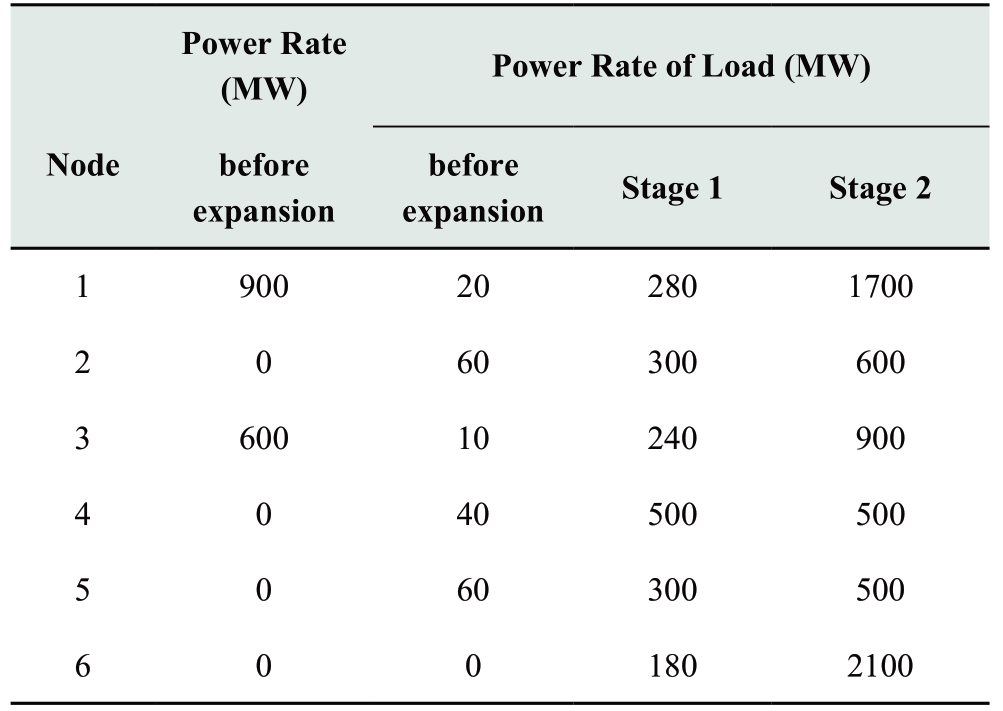
Table A2 Transmission corridor and line parameters to be built

References
[1]Cheng Y, Zhang N, Wang J, Li H, Wang Z, Xie L, Kang C (2019)Comprehensive evaluation of transmission network planning scheme for high proportion renewable energy integration.Power System Automation, 43(03):33-42
[2]Zhao F, Du Z (2018) Influence of sensitive load on distribution network planning with new energy sources.Power Engineering Technology, 37(05):56-63
[3]Xiao D, et al.(2014) Summary of power system flexibility and its evaluation.Power Grid Technology 38(6):1569G1576
[4]Jiang Z, Chen J (2013) Optimal distributed generator allocation method considering uncertainties and requirements of different investment entities.Proceedings of the CSEE, 33(31):34-42 (in Chinese)
[5]Silva IJ, Rider MJ, Romero R, et al.(2006) Transmission network expansion planning considering uncertainty in demand.IEEE Transactions on Power Systems, 21(4):1565-1573
[6]Bludszuweit H, Dominguez-Navarro JA (2010) A probabilistic method for energy storage sizing based on wind power forecast uncertainty.IEEE Transactions on Power Systems, 26(3):1651-1658
[7]Opathella C, Venkatesh B (2013) Managing uncertainty of wind energy with wind generators cooperative.IEEE Transactions on Power Systems, 28(3):2918-2928
[8]Cao Y, Wang G, Cao L, Ding L (2011) An identification model for self-organized criticality of power grids based on power flow entropy.Automation of Electric Power Systems, 35(7):1-6
[9]Yehsakul PD, Dabbaghchi I (1996) A topology-based algorithm for tracking network connectivity.IEEE Transactions on Power Systems, 10(1):339-346
[10]Liang C, Liu W, Wen Z.et al.(2010) The influences of power grid structure on self-organized criticality.Power System Protection and Control, 38(20):6-11
[11]Wang A, Luo Y, Tu G, Liu P (2010) Online transmission vulnerability assessment method based on the fault chain risk index.Proceedings of the CSEE, 30(25):44-50
[12]Chao D, Yang J, Su S (2011) Self-organized criticality and its cause of faults in Puyang distribution system.Power System Technology, 35(1):72-75
[13]Zhang WL, et al.(2010) North china-central china-east china UHV synchronous power grid construction and safety analysis.Chinese Journal of Electrical Engineering, 30(16):1-5
[14]Zhang H, et al.(2017) Transmission network expansion planning model considering grid vulnerability.Electrical Measurement and Instrumentation, 54(23):28-34
[15]Wu C, Han H, Qi W, Zhang W, Sun W, Cai H (2018) Research on power grid vulnerability identification method based on improved line efficiency.Power Engineering Technology, 37 (05):64-68
[16]Pan Z, et al.(2014) Multi-objective transmission network planning considering grid operation non-uniformity.Diss
[17]Sun W, Wang C, Zhang Y (2013) A power grid planning method considering transmission line load rate constraint and flexible cost evaluation within full planning cycle.Power System Technology,37(10):2985-2990 (in Chinese)
[18]Sun W, et al.(2015) Summary of power system uniformity evaluation methods and indicators.Power Grid Technology 39(5):1205-1212
[19]Zhang Q, Han X, Xu J (2005) Analysis of the relationship between safe economic dispatch and uniform dispatch.Journal of Power System and Automation, (02):84-89
[20]Zhang S, Wang T, Gu XP, Qin XH (2017) Power grid security and uniform dispatch based on transmission network structure optimization.Power Grid Technology, 41(9):2957-2963
[21]Yang J-J, Zhou J-Z, Wu W, Liu F (2005) Application of improved particle swarm optimization in economic dispatching.Power System Technology, 29(2):2-4
[22]Salazar-Lechuga M, Rowe JE (2005) Particle swarm optimization and fitness sharing to solve multi-objective optimization problems.Proceedings of Congress on Evolutionary Computation, IEEE CEC 2005, 2:1204-1211
[23]Liu Y, Hou Z-J, Jiang C-W (2006) Economic dispatch by a modified particle swarm optimization algorithm.Relay, 34(20):24-27
[24]Lei DM, Wu ZM (2006) Pareto archive multi-objective particle swarm optimization.Pattern Recognition and Artificial Intelligence, 19(4):475-480
[25]Wu X, Liu Z, Tian L, Ding D, Yang S (2014) Energy storage location and capacity determination of distribution network based on improved multi-objective particle swarm optimization algorithm.Power System Technology, 38(12):3405-3411
[26]Lu J, Miao Y, Zhang C, Ren H (2013) Optimal dispatch of power system with wind farm based on improved multi-objective particle swarm optimization algorithm.Power System Protection and Control, 41(17):25-31
[27]Zhou M, Sun S (1999) Principle and application of genetic algorithm.Beijing:National Defense Industry Press
[28]Gao Y, Ding L, Ji J (2020) A new hybrid reactive power optimization algorithm based on genetic algorithm and artificial neural network algorithm.Electronic Test, (13):47-49 +76
[29]Ding N, Chen Z, Hu L (2014) Double-layer optimal dispatch of wind power grid-connected system based on source-network coordination.Diss
[30]Liu PC, Li X (2016) Fault location algorithm of distribution network with distributed generation based on multi population genetic algorithm.Power System Protection and Control, 44(2):36-41
[31]Notice on Issuing the Annual Reference Price of Standards for Transmission and Transformation Engineering (2017), Jianji Jingjing [2017]No.10, 2017.
[32]Reference cost index for thermal power project quota design (2015 level), General Electric Power Planning and Design Institute, 2015
[33]Gao H, Xu Q, Ouyang, Zeng K, Song L (2018) Analysis of optimal control strategy for source grid load coordination with multi type distributed generation.Power Engineering Technology,37(04):21-26
Biographies
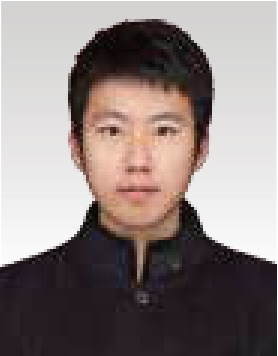
Zhiqi Li was born in Shandong, China, in 1995.He received the B.S degree in electrical engineering from Hunan University, Changsha,China, in 2014, where he is currently working toward the M.S.degree in electrical engineering from Shandong University.His research interests include power system planning,operation, and control.
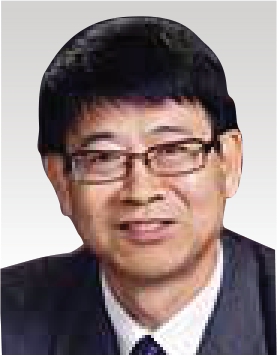
Xueshan Han received the B.E.and M.S.degrees in electrical engineering from Northeast Dianli University, Jilin, China, in 1984 and 1989, respectively, and the Ph.D.degree in electrical engineering from the Harbin Institute of Technology, Harbin,China.He is currently a full-time Professor of electrical engineering with Shandong University, Jinan, China.His research interests include power system operation and control, power system reliability assessment, and power economics.
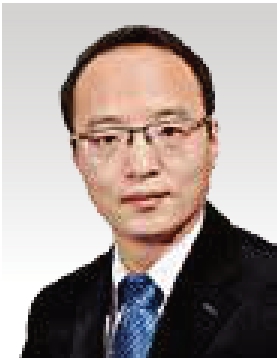
Ming Yang received the B.E.and Ph.D.degrees in electrical engineering from Shandong University, Jinan, China, in 2003 and 2009, respectively.He was an exchange Ph.D.student at the Energy System Research Center, University of Texas at Arlington,Arlington, TX, USA, from October 2006 to October 2007.Currently, he is a Professor with Shandong University.His research interests include power system optimal operation and control.

Yiran Ma was born in Shandong, China, in 1996.She received the B.S degree in electrical engineering from Shandong University of Science and Technology Jinan, China, in 2014,where she is currently working toward the M.S.degree in electrical engineering.Her research interests include energy storage and power system operation and control.
(Editor Zhou Zhou)
